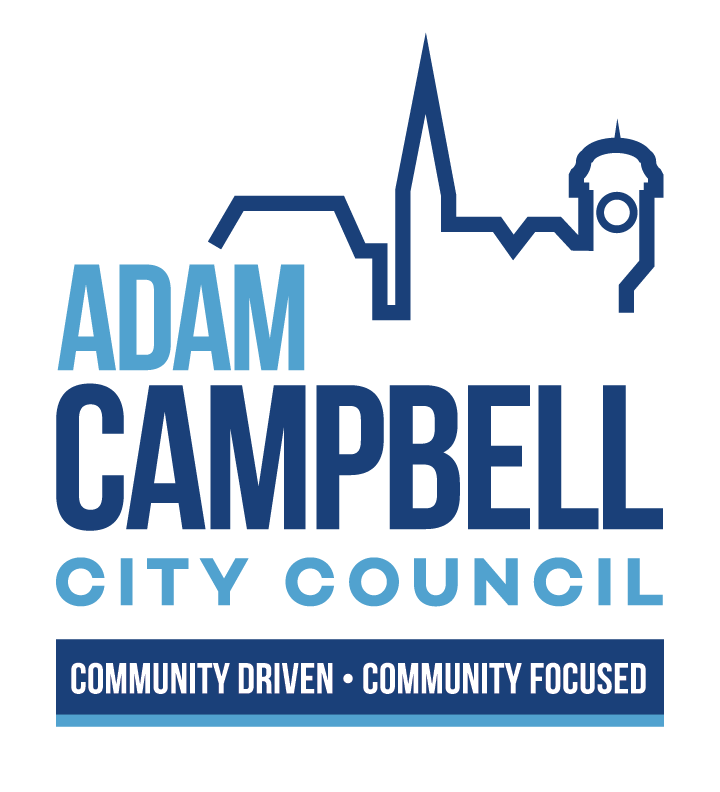Planning for the City’s Future
“A culturally rich, historic city with an exciting future of innovation, growth and resilience.”
That is the stated vision for the city of Staunton, one that would be impossible to achieve without careful planning, fair and thoughtful decisions consistent with the city’s codes and policies, and excellent communication throughout city government and with citizens. Staunton’s Planning Commission is an important component in helping the city to grow and prosper in a manner consistent with this vision.
As a current member of the Staunton Planning Commission, I have been able to apply my professional planning experience to local issues by serving on the commission since 2018. I am currently serving my second, four-year term.

and I discuss a Concept Plan for improvements to Greenville Avenue.
How Does the Planning Commission Work?
Appointed by a City Council review board, Staunton’s five Planning Commission members each serve four-year terms. We meet at 5:30 p.m. on the third Thursday of each month at City Hall, and the public is welcome to attend. The Commission is responsible for evaluating land use applications for appropriateness and conformity with city codes and policies. It then makes recommendations for City Council’s consideration.
Landowner- or developer-initiated requests may include property re-zonings, special use permits, and subdivision plats.
City-initiated requests may include:
- the review of updates to city plans (the Comprehensive Plan, Bicycle and Pedestrian Plan, and Greenways Plan are examples)
- amendments to city code/zoning ordinances
- a review of the city Capital Improvement Plan (a document that is updated annually and lays out anticipated revenues and expenditures for capital projects over a six-year period)
What’s in the Works Now?
One of this Planning Commission’s actions that I am most proud of is our commitment to improving infrastructure to provide, promote, and encourage safe pedestrian and bicycle travel throughout our city. The result was the city’s adoption of our Bicycle and Pedestrian Plan and Greenways Plan. I have also enjoyed working with the city Bicycle and Pedestrian Advisory Committee in a Planning Commission capacity. This committee, along with city staff, has been successful in developing and securing funding for several projects that are currently in design. Among them are the initial phase of the Commerce Road/Lewis Creek Greenway, new sidewalks along sections of Augusta Street, and the installation of bike lanes along Churchville Avenue.
Not a subscriber yet?
We can fix that!
At our most recent meeting, Frazier Associates presented the final draft of the update to the city’s Entrance Corridor Guidelines. These guidelines serve as a tool to illustrate best practices in planning new development and redevelopment along the roadways leading to our historic downtown. It was a privilege to serve on the committee in updating these guidelines alongside city staff, local developers, architects, and business owners over the past year.
In my last newsletter, I focused on the importance of successfully communicating information to our community. The Entrance Corridor Guidelines update is a great example of this, as it will consolidate 13 individual documents into a single set of concise guidelines that easily convey the necessary information with help from numerous graphics and illustrations.
What Comes Next?
Next month the Planning Commission will receive an update on the Uniontown Area Study. A historically Black neighborhood that has roots dating back to the end of the Civil War, the area has been underserved by the city for generations. For the past several months, through a city-initiated study, Uniontown residents and stakeholders have worked with a team of consultants and city staff to develop an action plan to initiate reinvestment, preserve local history, and rebuild a sense of community. The plan will also focus on improving roadway and walking connections in the neighborhood. Connectivity in the neighborhood was severed when the National Avenue bridge over the railroad was discontinued and ultimately removed 20 years ago.
What’s My Background in Planning?
I believe one of my strengths as a City Council candidate is my extensive experience in planning and local government processes. In my 20-year-plus professional career, I have had the opportunity to work with local governments on both the private side—in commercial and residential land development—and on the public side, as a transportation planner at the Virginia Department of Transportation Staunton District office. My current position with VDOT allows me to interact with local governments across the Shenandoah Valley on almost a daily basis, supporting them with planning assistance.
My time on the Planning Commission has been an enjoyable and rewarding experience and I can’t overstate how impressed I am with the city planning staff within the Community Development Department.
The greatest reward of planning is seeing ideas that one played a role in developing come to fruition through actual projects to improve one’s community. Staunton has a significant stream of well-planned, grant-funded public improvements on the way, and my goal is to continue and accelerate this upward trend.
This position has allowed me to develop professional relationships with many departments of our city government, including Community Development, Public Works, Finance, City Attorney and City Manager. This experience and these relationships make me uniquely qualified to work with other council members, city staff, and citizens to help guide Staunton into that exciting future we all envision of innovation, growth and resilience.
